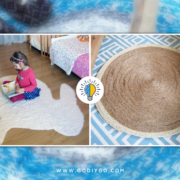Spray foam insulation surpasses other types of insulating because it has the ability to expand and securely cover gaps that would otherwise be visible. It has the greatest resistance value in the market, R-6, which means it can form an airtight seal.
Roofing & Exterior Applications
Too much moisture may lead to mold and impair the structural stability of buildings; thus, spray foam guns can be highly efficient in sealing roofs as well as other locations where condensation collects the greatest. Because the insulation forms a strong connection with the roof, it can improve wind & pressurization resistance. Spray foam may also be used to reduce noise by acting as a sound barrier over road traffic as well as other loud noises.
Filling the Interior Cavity
Spray foam insulation provides superior protection from mildew and mold in homes and commercial structures. The insulation’s polymers are inert, which means it doesn’t provide a food supply for mold or germs. It also acts as a barrier against external humidity, preventing mold growth. Because walls are the primary structural element of a structure, they must be able to endure a particular level of force, such as shaking during heavy winds. When spray foam insulation is installed inside the sidewalls, it adds strength to the structure, allowing it to sustain the structure more effectively.
Attic Applications
Spray foam insulation has the unique ability to cover all of the gaps and holes in attics & crawlspaces due to its ability to expand. Air leaking via minor holes and cracks throughout a home is the major source of energy waste in especially cold or hot conditions. Spray foam insulation may provide an airtight barrier that is 24 times less susceptible to air intrusion than traditional insulation. It also acts as a moisture barrier, preventing water from seeping into cracks, gaps, and fissures and causing damage to walls & floors.
Spray foam insulation may save homeowners and business owners a substantial amount of money on energy expenditures, typically by 50% or more, while also providing additional benefits like mould reduction & enhanced structural integrity.
Insulation Options
Whenever it comes to insulating, today’s householder has a number of alternatives, including:
- Cellulose
Cellulose insulation is composed of around 85% shredded, repurposed newspaper and 15% mineral solution that functions as a fire retardant. These mineral compounds, sometimes known as “borates,” assist in preventing the formation of mildew as well as the activity of bugs that could otherwise seek shelter in the heated, fluffy shredded paper.
- Fiberglass
Fiberglass remains the most popular type of insulation in today’s homes. It’s popular in part because it’s simple to set up and in the portion because it’s inexpensive. Although some manufactures have taken preliminary measures to address the dangers connected with fiberglass fibers, they remain in the minority.
- Spray Foam Insulation
Spray foam insulation is the type of polyurethane insulation that is mixed on-site & sprayed between wall, floor, & ceiling joists. To combine the chemicals (components “A” and “B”), special truck-mounted equipment is needed to transport the A & B elements through warmed hoses to the cannon, where they are mixed and afterward sprayed onto the information contained. Before solidifying, the combined compound expands as soon as it reaches the surface, pushing its way into some of the tiniest cracks. Spray foam insulation comes in two varieties. They are as follows:
- Closed-cell
Open-cell spray foam is thicker than closed-cell expandable foam. It gets extremely difficult to configure and has a high R-value. When set, open-cell spray foam produces an efficient air barrier due to its density. It also creates a more efficient moist environment than open cell insulation. However, it can be too costly.
- Open-cell
Open-cell thermal insulation is small and light, yet it packs a punch. It expands rapidly as quickly as possible into contact with the surface, filling every crack and crevice. For the most part, open-cell is utilized in residential applications.
- Mineral Wool
Basalt and recovered slag are used to make mineral wool (Source). It’s not truly wool, but it’s named that because the finished product resembles wool. It’s made by spinning and pulling molten forms of the abovementioned slag and basalt. Thermal insulation, like fiberglass, poses a health concern in most forms. The rigid-board version of mineral wool, on the other hand, has no such health danger.
















